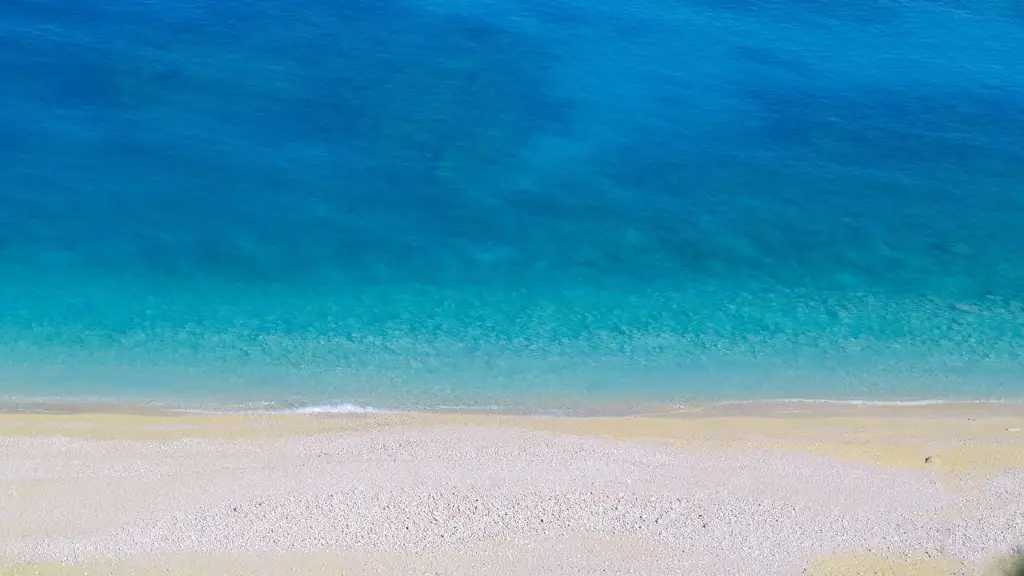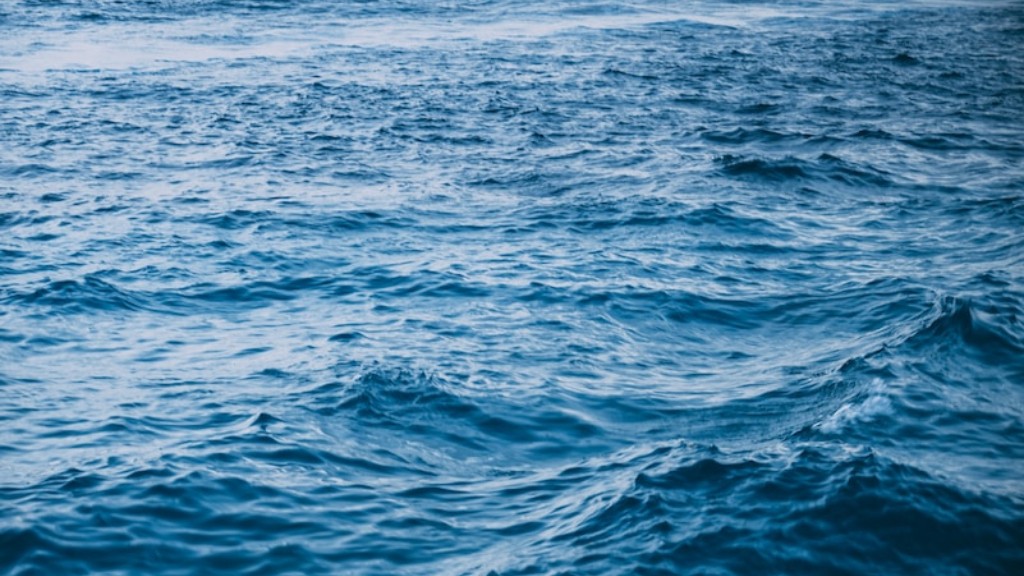Introduction
The Caribbean Sea is an important geopolitical region around the world for both its potential for economic growth and its culture and history. With it stretching from the Yucatan peninsula all the way down to the southernmost islands of South America, the Caribbean Sea is home to many diverse nations. One such major demographic in the region are the countries with Spanish as their main language – as it was introduced to the region during its time as a Spanish colony in the 1500s. In this article, we will talk about two of the Spanish-speaking countries in the Caribbean Sea, and examine their current political and economic backgrounds.
The Dominican Republic
The Dominican Republic, a country located on the eastern part of the island of Hispaniola, is one of the Spanish-speaking countries in the Caribbean Sea. It currently has a population of over 10 million people, who have an average life expectancy of 77 years – a significant improvement since 2000. In terms of language, Spanish is the official and most commonly spoken language, with over 96% of the population being fluent in it.
In terms of its history, the Dominican Republic was initially under Spanish colonial rule in the 1500s – before declaring its independence from Haiti in 1844 and becoming the Dominican Republic. Since then, the country has gone through a few political transitions as well as two civil wars – before coming under its current democratic administration. In terms of its economy, the country has a GDP of over $89 billion, with tourism, manufacturing and remittances from its citizens living overseas being the major contributors. It has also seen a steady annual growth rate of around 5% since 2000.
Cuba
Cuba is the other Spanish-speaking Caribbean country in the region and is located to the northwest of Hispaniola. It currently has a population of over 11 million people, with an average life expectancy of approximately 78 years. Unlike the Dominican Republic, Cuban citizens have limited ability to travel and earn money overseas – due to the economic sanctions imposed by the US. Spanish is the official language of the country and is used by nearly all of its citizens.
Cuba has a complex history which is intertwined with that of the United States. It fought for its independence from the Spanish in 1898 – before becoming a republic in 1902. Since then, it has seen a number of revolutions and civil wars, before becoming a communist state in 1958. In terms of its economy, it has had a GDP of over $78 billion with tourism, sugar and tobacco production among its major industries.
Comparison
Comparing the two Caribbean Sea countries’ Spanish-speaking populations, the Dominican Republic has a larger population at 10 million as opposed to Cuba’s 11 million. The life expectancy of the citizens of both countries is also similar, with Dominican Republic marginally ahead. Both have Spanish as their official language and similarly, both have their own histories which are the foundation of their current economy. The major difference between the two countries is that Dominican Republic has much freer international travel and remittances while Cuba is restricted due to the US economic sanctions.
Trade
In terms of trade, both countries have seen increased investment and trading of goods, with the Dominican Republic having the larger market of the two countries. It has seen $111 billion worth of exports in 2019, mainly consisting of fuels, organic chemicals, sugars, food and beverages, and tobacco. Cuba has also seen a slight improvement in its trade, with $2 billion worth of exports with the US and Canada being its main importers of goods.
The Dominican Republic has seen investments from foreign investors, with the US and Canada being the major source countries. It also has free trade agreements with a number of Central and South American countries, while Cuba has remained isolated from foreign investment due to its communist policies.
Culture
The two countries have different cultures and customs, given their different histories and political ideologies. The Dominican Republic, being a former Spanish colony in the 1500s, has a strong Spanish influence in its culture, as evidenced by its predominantly Spanish language. Compared to its Cuban neighbor, the Dominican Republic is more open to foreign visitors and cultures, as well as having more freedom of speech and assembly.
Meanwhile, Cuba’s culture and tradition is heavily influenced by its Spanish colonial past as well as its communist ties. Cubans are seen to be more open to conversations about politics, and the country is known for its lively and festive atmosphere – seen in its music, dance and cuisine. Cuba’s economy is driven by its local industries and foreign investments are largely restricted due to its communist policies.
Conclusion
To conclude, the Dominican Republic and Cuba are two Spanish-speaking nations located in the Caribbean Sea. Both have their distinct histories, cultures and economic backgrounds, which make them unique in their own right. What they both have in common however is the influence of the Spanish language, which is a testament to their colonial past in the region. In terms of their trade and investment, the Dominican Republic has been more successful in attracting foreign investment and setting up trade agreements, while Cuba remains an isolated nation due to its communist ideology.
Economy
The two countries have different underlying economic systems driving their development. The Dominican Republic has a market-based economy – with both private companies and state-owned enterprises operating under the same regulations. It also has the Dominican peso as its currency, which is fairly stable and accepted as payouts from foreign companies. On the other hand, Cuba operates under a centrally planned economy where the government controls the vast majority of economic activities, as well as the pricing of goods and services. The Cuban peso is its official currency, although it is not accepted in many foreign countries and is heavily discounted compared to the US dollar.
In terms of economic growth, both countries have seen steady economic expansion in recent years. The Dominican Republic has seen a growth rate of around 5%, allowed due to its open economic environment and the influx of foreign investments. Meanwhile, Cuba has a much slower growth rate of 1%, due to its centrally planned economic system and lack of foreign investment. Despite its slow growth, the Cuban government has been successful in ensuring high levels of employment and education for its citizens.
Remittances
Remittances, or the money that citizens of a country send back to their homeland, is also an important factor in the growth of the two countries. The Dominican Republic, with its more open economic system, has seen more remittances from its citizens working abroad, with an estimated $4.4 billion being sent back in 2018. This has helped to stimulate the economy, and provide much-needed funds for its citizens.
Cuba on the other hand, has seen limited remittances due to the US economic sanctions imposed on the country. This has limited the amount of money its citizens can earn overseas, and consequently, remittances to the country have been greatly reduced. Despite this, the Cuban government has been pushing to increase remittances and open the economy to foreign investors.
Economic Policies
The major difference in the economic policies of the Dominican Republic and Cuba lies in the amount of control the government has in economic activities. The Dominican Republic has a market-based economy where private companies and state-owned enterprises are allowed to compete for business. In comparison, Cuba operates under a centrally planned economy where the government heavily regulates prices, wages and investment, as well as controls the majority of the economy.
Both countries also engage in international trade, with the Dominican Republic having many free-trade agreements with its neighbors. Cuba has remained an isolated nation due to its communist policies, although it has seen some growth in its trade relations with foreign countries such as the United States and Canada.
Conclusion
In summary, the Dominican Republic and Cuba are two Spanish-speaking nations located in the Caribbean Sea, with distinct economic backgrounds and policies. The Dominican Republic has a market-based economy, with both public and private sectors operating under the same regulations, while Cuba operates under a centrally planned system with government control over the majority of economic activities. In terms of remittances, the Dominican Republic has seen more due to its more open economy, while Cuba has seen a decrease due to US sanctions.
Infrastructure
The two countries’ infrastructure is also very different, with the Dominican Republic having higher levels of investment into its infrastructure and services compared to Cuba. The Dominican Republic has seen improvements in its roads, telecommunications and electricity sectors, with the government investing heavily in these areas. It also has a relatively well-developed education system, with the literacy rate of its citizens being at a healthy 91%.
Conversely, Cuba has a very limited investment into its infrastructure and services. It has a very poor road network, limited telecommunications and a very weak electrical grid. Its education system is also limited and its literacy rate is slightly lower than its Caribbean nations, at a reported 86%.
Healthcare
The two countries also have different healthcare systems, with the Dominican Republic’s healthcare system being ranked much better than Cuba’s. The Dominican Republic has a national health insurance system that covers most of its citizens and has seen a marked improvement in its healthcare system – as evidenced by its life expectancy moving up from 72 years in 2000 to 77 years in 2019. It also has multiple private healthcare facilities which cater to those with the means to pay for it.
Cuba on the other hand has a nationalized healthcare system which is free for all citizens, but the quality of healthcare is seen to be lower compared to the Dominican Republic. Cuba has made strides in its healthcare sector, with its life expectancy moving up from 75.1 years in 2000 to 78.1 years in 2019. It also has a higher-than-average doctor-patient ratio compared to the rest of Latin America.
Tourism
Tourism is also an important sector for both countries, and both have seen increasing numbers of visitors in recent years. The Dominican Republic has seen a steady increase in its number of visitors since 2000, with the government investing heavily in infrastructure to cater to the influx of tourists. It also has a range of tourist attractions, from beaches to mountain resorts and colonial-era ruins.
Cuba also has a booming tourism sector, with its history and culture being a major draw for foreign visitors. It has a vibrant nightlife, a well-developed music scene, and its beaches are considered among the best in the world. Despite US sanctions, Cuba still sees millions of tourists each year – although the majority are from Russia, Canada and Europe.
Conclusion
In conclusion, the Dominican Republic and Cuba have very different infrastructures and healthcare systems. The Dominican Republic has a higher rate of investment in both these sectors, which has resulted in higher levels of education and life expectancy. It also has a booming tourism sector, which has seen increasing numbers of visitors in the past few years. Cuba on the other hand has a more limited infrastructure and healthcare system, and has had to rely on its vibrant culture to attract visitors. Nevertheless





